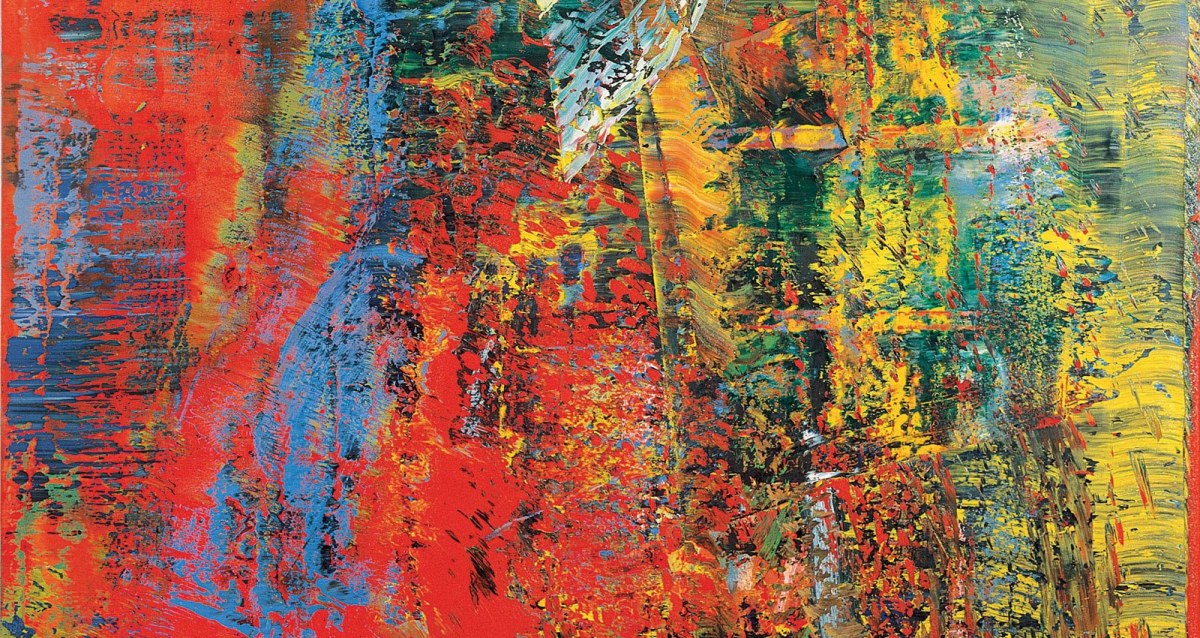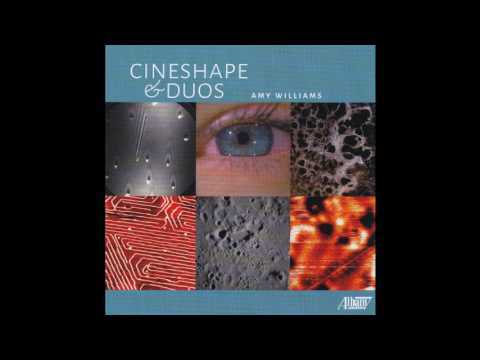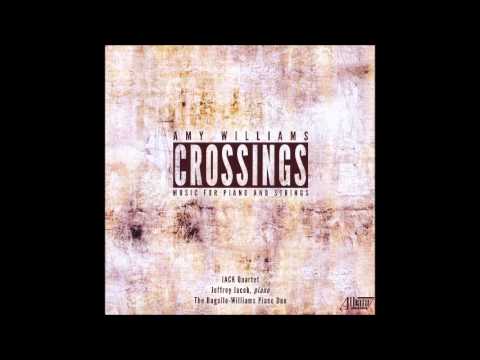Recently, the JACK Quartet played a series of concerts at the Whitney Museum, sounding the sparse celestial beauty of John Cage’s “Thirty Pieces for String Quartet” among the floating colors and shapes of Alexander Calder’s mobiles. Listeners wandered through the gallery featuring an exhibition of Calder’s works, aptly titled “Hypermobility,” focusing on the sound and space and breath of these tactile entities. The pairing of sounds with visuals was uncanny; I felt like I was looking at what I was hearing and vice versa. The quartet (and audience) then transitioned to a theater on another floor of the museum for a more “traditional” performance of Morton Feldman’s “Structures,” Earle Brown’s String Quartet, and Amy Williams’s “Richter Textures.” The following week, I talked with Williams about the genesis of her piece, the capacity for sound to convey multisensory experiences, and the diminishing division between “academic” and “nonacademic” composers.

VAN: How did you go about conveying visual or tactile textures through sonic textures?
Amy Williams: Before I started working on the piece, I studied a lot of Gerhard Richter paintings and tried to learn more about his process. What interested me the most was his way of working between controlling some elements of his painting and keeping other elements indeterminate. So, for example, when he layers paints that dry at different speeds, he’s not exactly sure how that drying process is going to end up…he’s working in the space between control and spontaneity.
As a musician, I feel more comfortable trying to control every element and every detail. But more recently I’ve been trying to find ways to free up that process a little for the performers, so that they have more freedom to interpret and make decisions. The first few movements are quite strictly notated, and then there’s sort of a moment at the end of the third movement where things open up and are more aleatoric. The fourth movement is quite free—it’s very much about the communication between performers. The piece is trying to occupy that space between very controlled, strict ways of writing and much more flexible ways of writing, which was the inspiration I took from Richter’s general approach to painting.
More specifically, what I love about Richter’s paintings is the way you can experience them from different perspectives. Something looks like a realistic landscape if you’re standing back, but if you zoom in you will see the complexity of the texture. His abstract paintings are so grand that your eye can focus only on following the reds in it, or following the bumpy textures, or following the combination of colors in a particular spot on the painting. Those kinds of things inspired the different textures of the piece.
How did you decide on seven movements and these delineations between them? Was each movement based on a specific painting?
It wasn’t that direct; I was more interested in his process, philosophies, and writings. Then I started writing them one at a time. Normally I have the whole structure planned out, and in this case I knew I wanted shorter movements. And like some painters can work on several paintings at the same time, I was working on multiple movements at once. The overall form of the piece came to life through the individual movements. I do have a painting now that I think connects to each movement, but it’s not like I was staring at that painting while writing that movement.
This past semester, I took a seminar in Phenomenological Approaches to Musical Analysis, and a lot of what we did was mapping sounds visually—it felt like being in first grade again, making visual and sculptural representations of the music we were listening to…
Yeah! And I think with a lot of music that, like mine, starts from a visual image, people can hear that—they can hear those directions and shapes and silences. I’m always trying to make sure that the overall form of the piece is clear while also zooming in on a very detailed level, so that my pieces work on a close-up level but also far away.
Each movement focuses on a different essential element of the music, whether it’s a timbral thing, or register, or a gestural shape. But it also makes up a whole separate shape as well.
Is there still a split between “PhD music” and nonacademic music?
I feel like those divides aren’t as applicable anymore. I have doctoral students who are writing extremely nonacademic music; they’re writing sound art, experimental music for alternative spaces, and so on. The idea that there’s academic music and not…I mean, the academy has become so much more open that the purpose of the academy itself has sort of changed. It’s much more supportive, pluralistic, and open to different approaches to composition. At least I like to think it is!
The sign of a bad composition program would be if it tells the students to write in a particular way—and then all the students write in that same way. I’m lucky I went to graduate school right after the whole serialist thing, so already things were much freer for my generation than for the previous one.
The latest from VAN, delivered straight to your inbox
Could you touch on some of your earlier influences, growing up in Buffalo around Cage and Feldman, and also maybe some of your more recent influences?
The music I’ve been closest to has influenced me—not always in a way that is imitative, but in ways that maybe even I am not entirely aware of. I grew up listening to all kinds of contemporary music because my father’s a percussionist, and the Center for Creative Associates brought practically every major composer through Buffalo, so I was really fortunate to hear all this contemporary music, and it was completely normal for me. Even from a young age, I would rather have played Debussy or Prokofiev than Mozart or Beethoven. Earlier on, direct influences for me were Stravinsky and Feldman. Stravinsky is such an important composer! His approach to orchestration and form has stuck with me for many many years.
The music I dug deepest into in grad school was that of Conlon Nancarrow. My piano duo had a project of transcribing his music for piano four-hands. Learning that music from the inside out has been important to me in many ways. Also my piano duo recorded all of György Kurtág’s music a few years ago. Of course that’s very different from Nancarrow, who controls absolutely everything in a mechanical way, to Kurtág’s level of flexibility and choice, and how you go about interpreting his ambiguous notation.
And now? I feel like I’m hearing all kinds of music and these influences come out in my own music, and I try to filter them—or even suppress them!—in various ways.
I try to ask every non-cis-male composer whom I interview if they have any advice or anecdotes to share about navigating the sexism of the contemporary music scene.
There are challenges. Particularly, for me, combining an active career with parenthood can be quite challenging. There was an article in NewMusicBox about that. There are no artist residencies where you can bring children. So any parent—not just women—is missing out on a whole social network and all these professional development opportunities because they happen to have children. But I always tell people not to let that interfere with your life: you have to do what feels right to you. That’s one place where I really see a problem that needs to be remedied.
As for advice? I try to show by example that it’s possible to compose and have a family, that it’s possible to compose and perform and teach. I mean, it’s crazy, but it’s still possible. I just do it. That’s the advice, I guess: just do it, and don’t let anything get in your way. ¶
Subscribers keep VAN running!
VAN is proud to be an independent classical music magazine thanks to our subscribers. For just over 10 cents a day, you can enjoy unlimited access to over 875 articles in our archives—and get new ones delivered straight to your inbox each week.
Not ready to commit to a full year?
You can test-drive VAN for one month for the price of a coffee.



